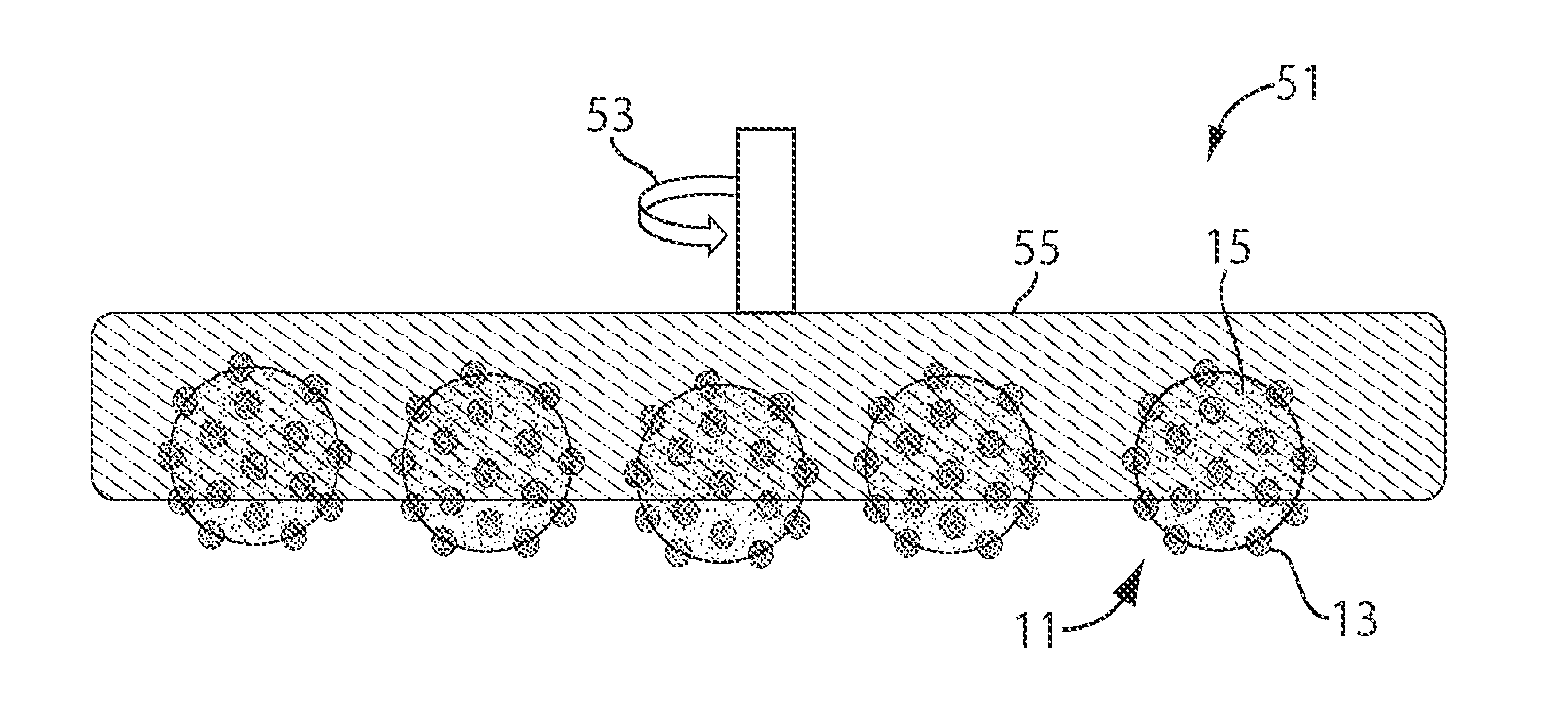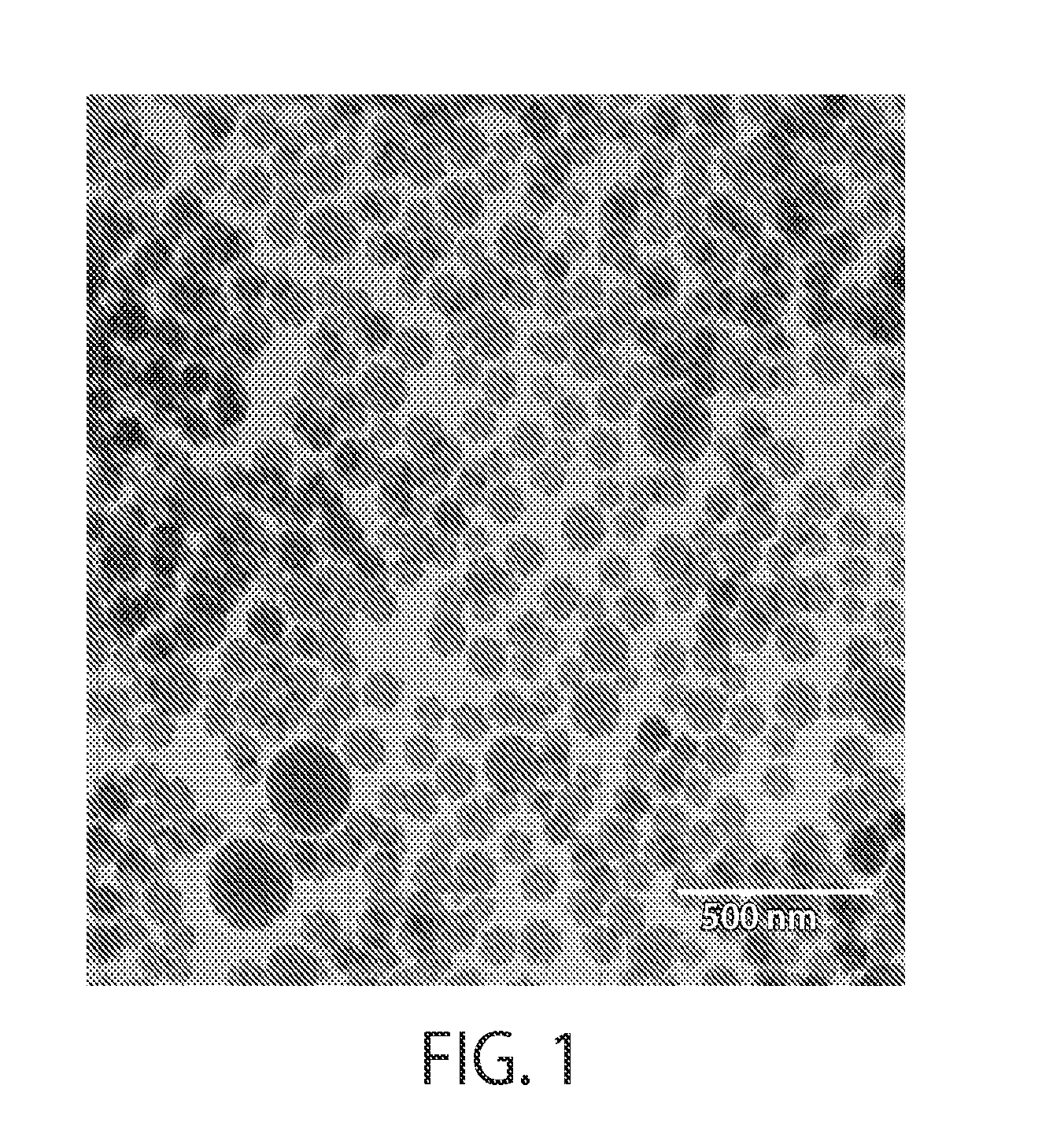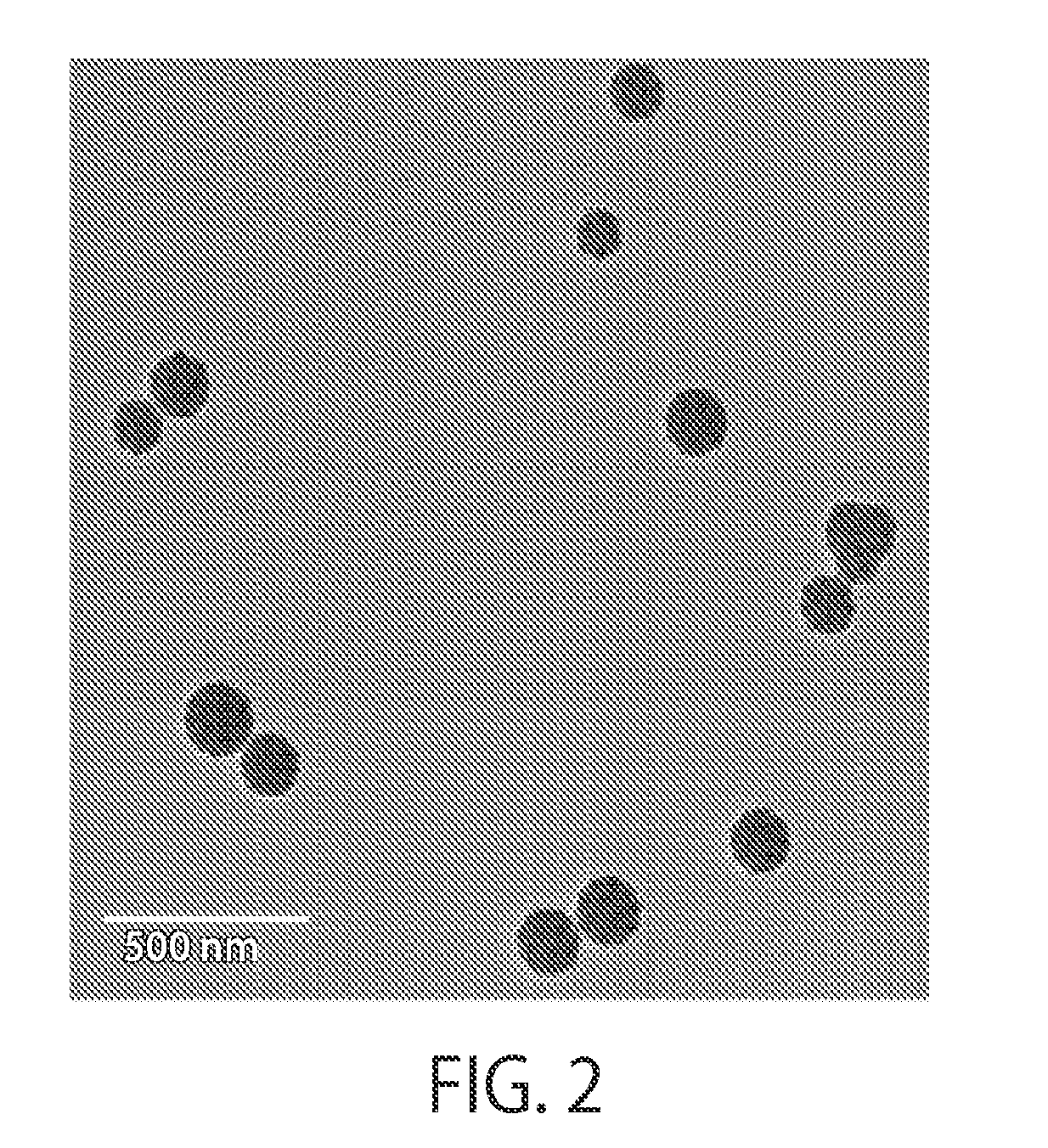Metal oxide-polymer composite particles for chemical mechanical planarization
a technology of metal oxide and composite particles, applied in the direction of lapping machines, other chemical processes, polishing compositions, etc., can solve the problems of affecting the cost and efficiency of the overall manufacturing process, the working surface of the pad can become eroded, and the polishing debris can get trapped in the surface micro-channels, etc., to achieve good removal rate, good wid thickness uniformity
- Summary
- Abstract
- Description
- Claims
- Application Information
AI Technical Summary
Benefits of technology
Problems solved by technology
Method used
Image
Examples
Embodiment Construction
[0034]Embodiments described herein relate to metal oxide-polymer composite particles. In various implementations, the composite particles are used in processes, compositions or equipment for the removal of material from a workpiece, through a combination of chemical and abrasive actions, such as, for example, chemical mechanical planarization (CMP). The composite particles also can be utilized in polishing operations, materials and / or equipment suitable for polishing various materials such as glass, ceramic, dental materials, solar panels or components thereof, optical surfaces, photovoltaics or components thereof, and others.
[0035]The composite particles can be thought of as having a polymer core and inorganic oxide particles, also referred to herein as “particulates,” that are bound to or embedded in its surface. In some implementations, inorganic oxide particulates or another inorganic material, or both are also present within (either partially or entirely embedded within) the po...
PUM
| Property | Measurement | Unit |
|---|---|---|
| Diameter | aaaaa | aaaaa |
| Diameter | aaaaa | aaaaa |
| Composition | aaaaa | aaaaa |
Abstract
Description
Claims
Application Information
 Login to View More
Login to View More - R&D
- Intellectual Property
- Life Sciences
- Materials
- Tech Scout
- Unparalleled Data Quality
- Higher Quality Content
- 60% Fewer Hallucinations
Browse by: Latest US Patents, China's latest patents, Technical Efficacy Thesaurus, Application Domain, Technology Topic, Popular Technical Reports.
© 2025 PatSnap. All rights reserved.Legal|Privacy policy|Modern Slavery Act Transparency Statement|Sitemap|About US| Contact US: help@patsnap.com



